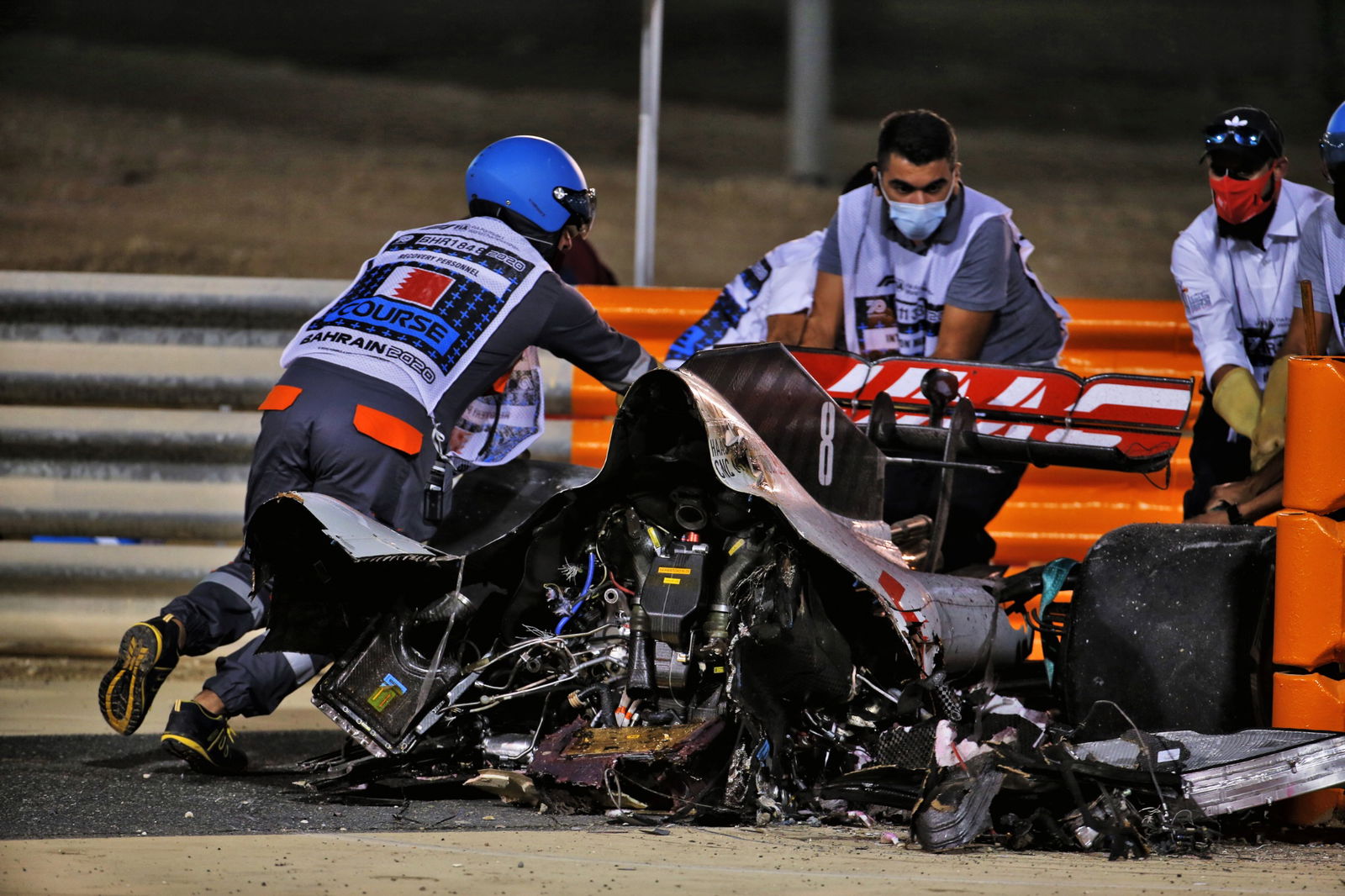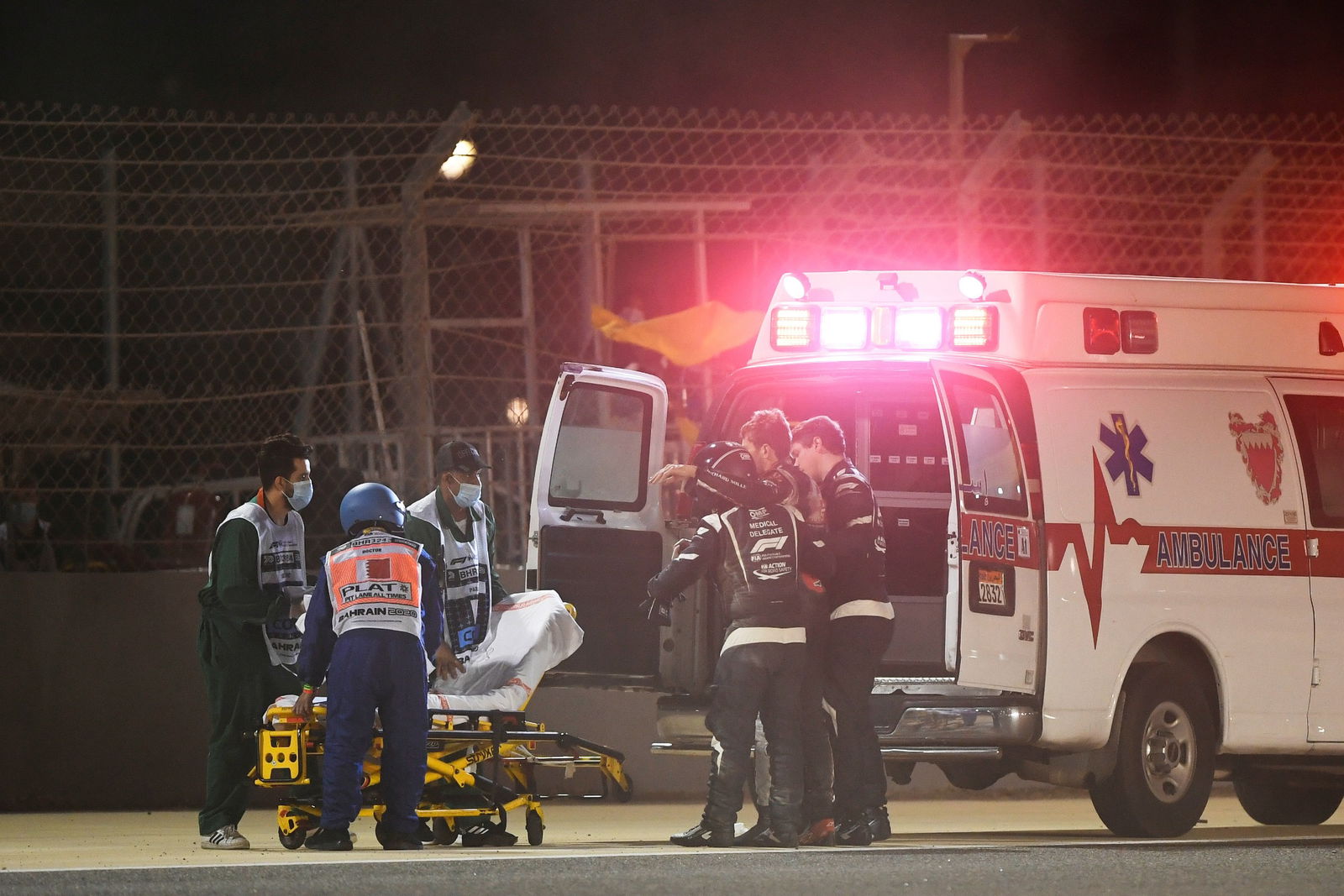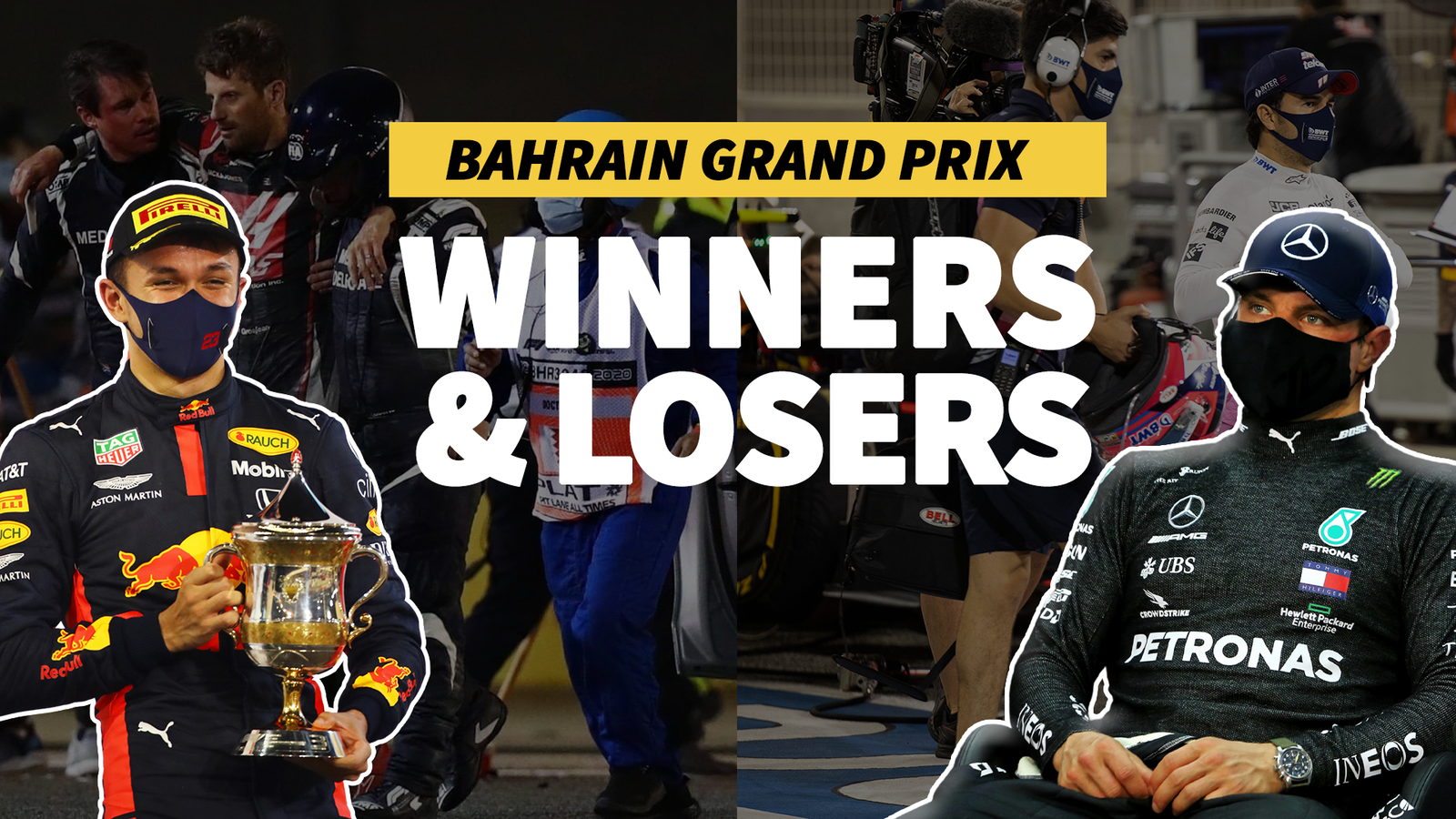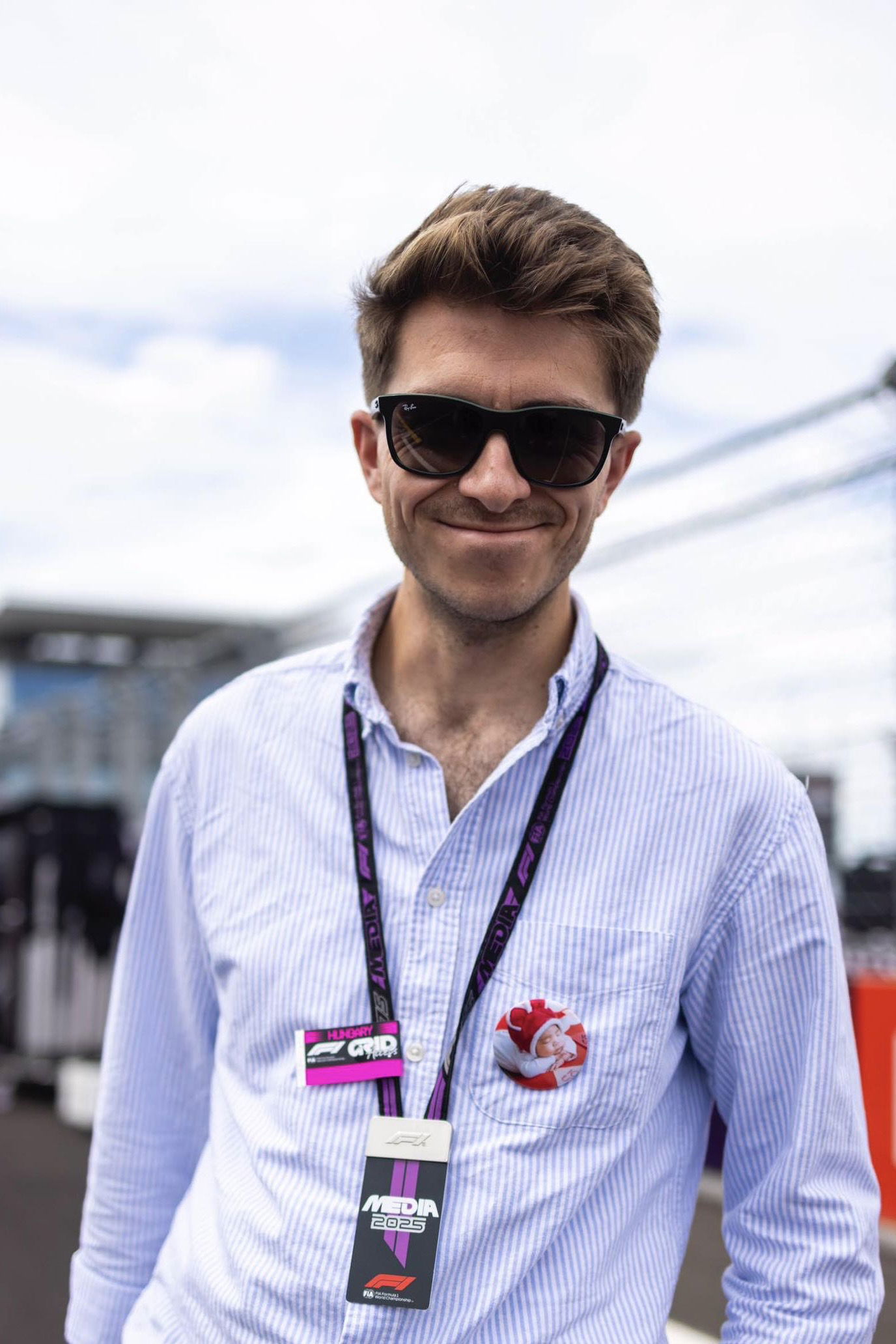How Romain Grosjean miraculously escaped F1 inferno with his life

The entire Formula 1 paddock breathed a huge and collective sigh of relief when Romain Grosjean dramatically jumped from smoke and fire to pull off one of the most miraculous escapes in the sport’s history.
Grosjean suffered an enormous head-on collision with the Turn 3 barriers at 137mph after making contact with AlphaTauri’s Daniil Kvyat on the opening lap of Sunday’s race. The impact measured a force of 53G and resulted in his Haas being torn clean in half before bursting into flames.
The scenes were as shocking as they were sickening as Grosjean’s car sliced through the armco and almost instantaneously exploded into a raging fireball in one of the most horrifying crashes F1 has seen for years.
Grosjean was trapped in the cockpit of his fiery VF-20 for nearly 30 seconds before climbing out of his burning wreckage and being helped over the barriers by the on-site medical team who thrust themselves into the face of danger to come to the aid of the visibly shaken driver.
The Frenchman hobbled away from the violent crash with second-degree burns to his hands and feet, which he is currently being treated for in hospital.
Seven-time world champion Lewis Hamilton described the incident as “shocking” and said it served as a reminder of the dangers of F1, even in what is considered to be largely ‘safe’ times in the modern era.
Haas driver Kevin Magnussen added it was “frankly a miracle” that his teammate had survived.
A combination of factors ultimately helped Grosjean escape and prevented a much worse and potentially fatal outcome.
F1’s ‘heroes’ speedy arrival
FIA factor Ian Roberts and Medical Car driver Alan van der Merwe were among the first responders to the scene of the terrifying crash site and their speedy action was certainly a contributing factor in helping to save Grosjean’s life.
“It was a very odd scene, where you’ve got half a car pointing in the wrong direction and just across the barrier,” Roberts recalled to Sky F1.
“Just a mass of heat. I just took stock and looking to the right at that point I could see Romain trying to get out.
“We needed some way of getting to him. We got the marshal there with the extinguisher, and the extinguisher was just enough to push the flame away as Romain got high enough, then to reach over and pull him over the barrier.”
Asked what the first thing he said to Grosjean was, Roberts replied: “I think I told him to sit down. You could see obviously he was very shaky and his visor was completely opaque and in fact melted.
“I managed to get his helmet off just to check that everything else was OK. He had some pain in his foot and on his hands.
“From that point we knew it was safe enough to move him round into the [medical] car just a little bit more protection, get some gel onto his burns and get him in the ambulance and off to the medical centre.”
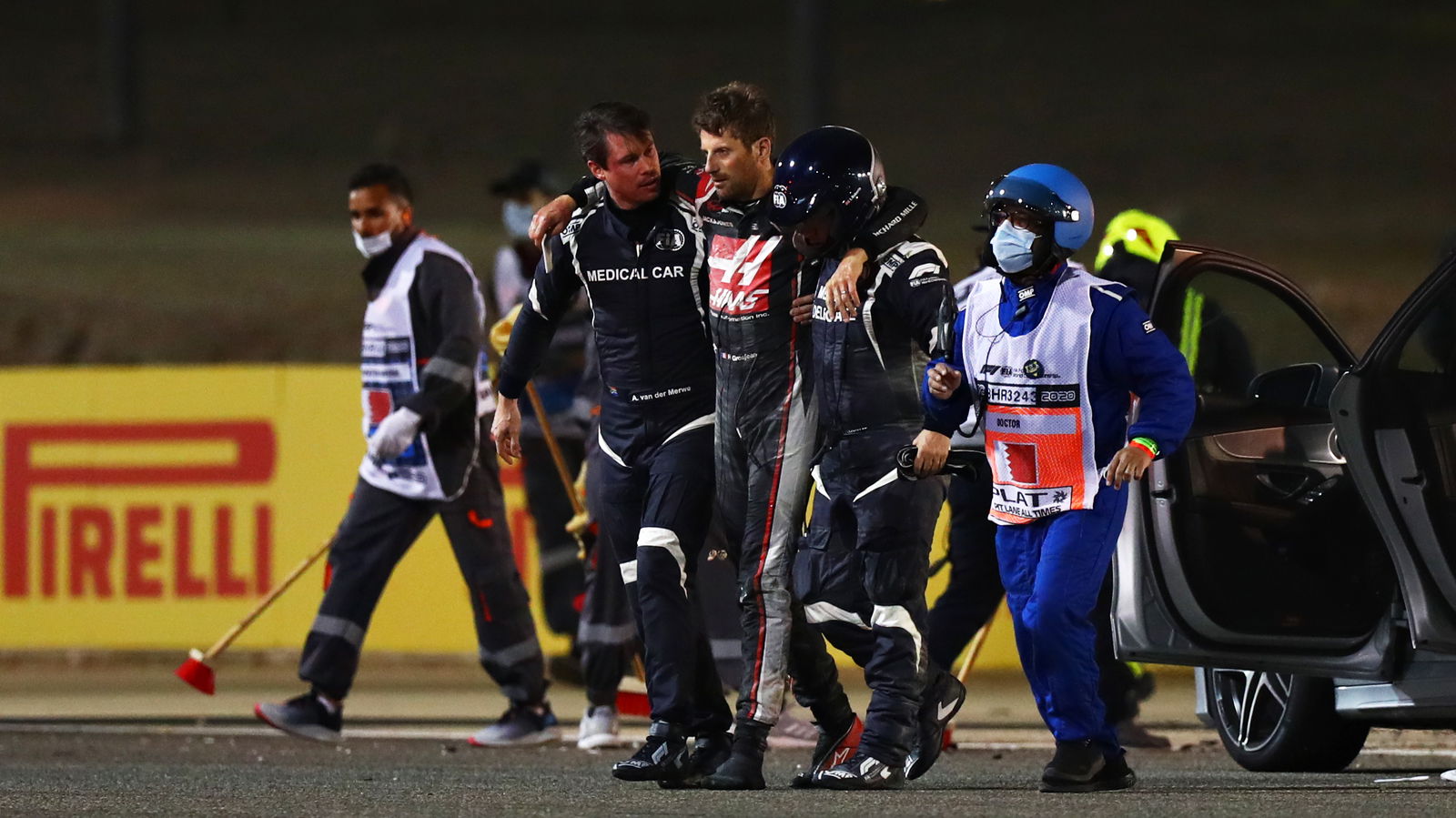
Roberts conducted an initial checkover and said the immediate concern was whether Grosjean had been affected by the fire and smoke, or suffered any form of head injury.
“Our first thought was flames, smoke inhalation, airway issues,” Roberts explained. “But in fact, nothing went up into his helmet, we’ve had a look at the helmet as well.
“Certainly looking at him clinically we were quite happy with him from a sort of life-threatening injury point of view and it was just trying to make him comfortable from the injuries that we could actually see.”
Van der Merwe stressed that while preparation and training was pivotal in dealing with the incident, he said “instinctive and quick thinking” was also required in order to help save Grosjean.
“A lot of this is just preparation, but when you get to something like this, we’ve not seen this combination before,” he explained.
“I’ve not seen fire like this in my stint as the medical car driver, so a lot of it is new and unknown territory, so we can only be prepared as our own ideas.
“We do a lot of checklists and a lot of scene prep, talking about scenarios, but this was crazy – honestly to get there and see half a car and the other half nowhere to be seen and just a huge ball of flame.
“So you literally have seconds, you are thinking on your feet. Preparation only gets you so far and then after that there’s a lot of sort of instinctive and a bit of quick thinking.”
Halo stands up to the task - again
Grosjean was among halo’s early critics when the controversial cockpit head protection device was introduced three years ago, but on Sunday night, he was left paying tribute to it for saving him.
“It is not F1,” said Grosjean back in 2017 as he urged against its mandatory introduction as part of a push to provide drivers with added protection after Jules Bianchi suffered fatal head injuries when he struck a recovery vehicle at the 2014 Japanese Grand Prix.
But it has since proved its worth on numerous occasions, most notably at the 2018 Belgian Grand Prix, where Charles Leclerc’s halo was struck by Fernando Alonso’s flying McLaren.
Halo undoubtedly played a role in protecting Grosjean in Bahrain, with F1 boss Ross Brawn adamant the system had saved his life.
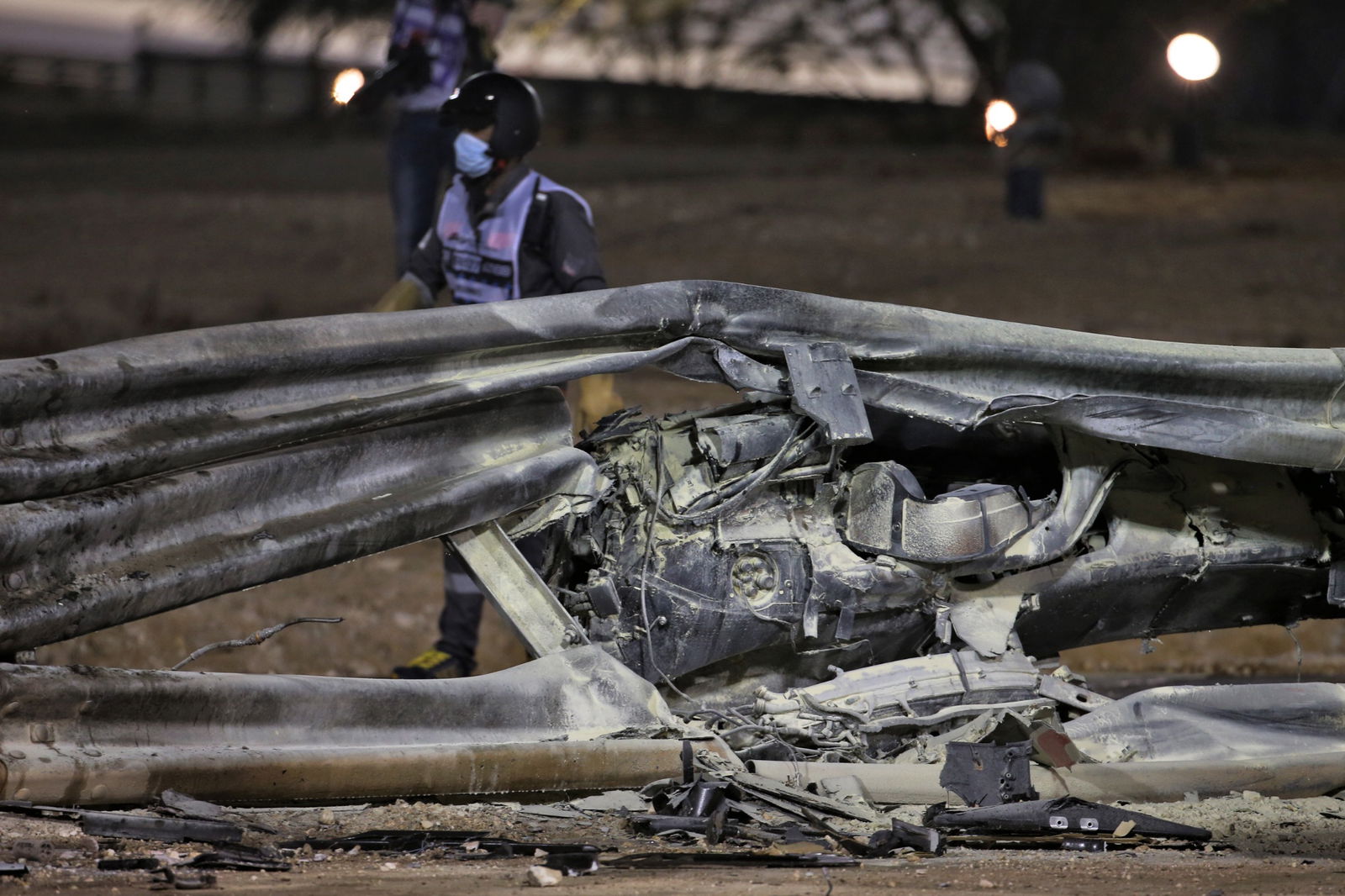
"There is absolutely no doubt the halo was the factor that saved the day - and saved Romain," Brawn said.
Grosjean admitted he had changed his stance on halo, which he credited for saving him in an update from his hospital bed in Manama.
“I wasn’t for the halo some years ago but I think it’s the greatest thing that we’ve brought to Formula 1,” he explained. “Without it I wouldn’t be able to speak to you today.”
Surely now, the debate over whether halo is a necessity can be put to bed for good.
Angel watching over Haas
It is a testament to F1 and the governing body the FIA’s relentless crusade for ever-improved safety standards over the years that Grosjean was able to survive and get out of his car practically unaided.
But there were also some elements of sheer good fortune which enhanced his chances of escape.
“We got lucky,” Haas team boss Guenther Steiner acknowledged. “An angel was with us.”
Firstly, he avoided serious injury from the impact despite its ferocity and remained conscious throughout. Any form of debilitating damage to Grosjean’s lower extremities would have prevented him from successfully extracting himself from the car while flames engulfed what remained of his Haas. Escape would have also been difficult had what remained of his car not came to rest in the angle and position it did, enabling Grosjean to haul himself out of the wreckage.
Equally remarkable was the fact that Grosjean’s steering wheel broke off in the impact, buying the Frenchman critical seconds that he would have had to otherwise spend removing it in order to escape the fire.
"There’s a huge element of luck in him surviving that accident and it was a colossal relief when you actually saw him in the medical car, almost that you couldn’t believe that he was in the medical car and had got there by himself," commented Mercedes trackside engineering director Andrew Shovlin.
"That was really the biggest thing for us because we’ve all seen bad accidents in our career and there aren’t many that look like that."
So relieved that @RGrosjean is safe. Thanks to Dr Ian Roberts and the @FIA teams for their courageous and efficient intervention. We have always put safety at the top of our priorities and will continue to do so.#F1 #BahrainGP pic.twitter.com/64xubWCgUH
— Jean Todt (@JeanTodt) November 29, 2020
“Even Romain, Romain did a huge amount,” van der Merwe said. “The fact he was able to get out of that himself, the fact that his shoe came off, these small things... one of things changed and it could have been a very different outcome.”
After dodging a bullet, F1 and the FIA will now turn its focus onto launching a thorough investigation to address some of the serious concerns overshadowing the crash, such as how Grosjean’s car managed to pierce through the barrier in the first place, and what created the raging inferno that spread so devastatingly quickly.
"We have got to do a very deep analysis of all the events that occurred, because there are a number of things that shouldn't have happened,” Brawn said.
F1 race director Michael Masi provided more detail over how the FIA will go about undertaking its investigation into the accident ahead of next weekend’s second race in Bahrain, which will be held on the Outer circuit configuration.
“The single seater department, of which F1 is a part of, from a technical perspective has an involvement, the F1 teams, technical directors, the circuits commission will be involved,” he explained.
“All of the various parts of the FIA group as a whole, the respective subject matter experts, will review their particular area and see what can be earned, what can be improved, be it small, large, in between, there’s always something to be learned.
"It’s a credit to the safety systems we have as a whole and our entire safety package the way the FIA has been working through it, over many many years, that Romain came out relatively – all things considered – unscathed.”
